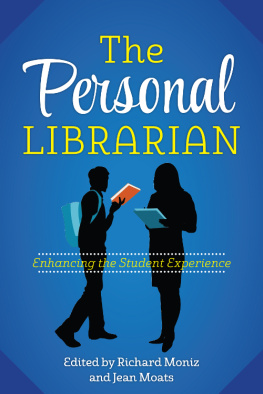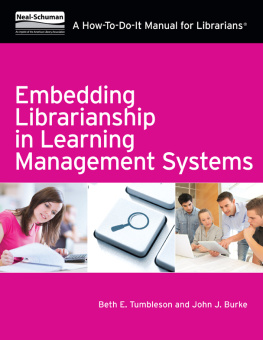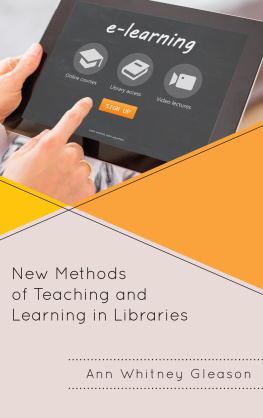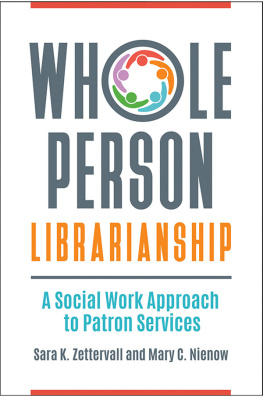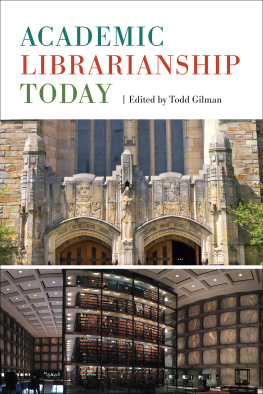Library Technology Reports
Expert Guides to Library Systems and Services
Embedded Librarianship: Tools and Practices
Buffy J. Hamilton

alatechsource.org
Library Technology Reports
ALA TechSource purchases fund advocacy, awareness, and accreditation programs for library professionals worldwide.
Volume 48, Number 2
Embedded Librarianship: Tools and Practices
ISBNs: (print) 978-0-8389-5857-5; (PDF) 978-0-8389-9421-4; (ePub) 978-0-8389-9422-1; (Kindle) 978-0-8389-9424-5.
American Library Association
50 East Huron St.
Chicago, IL 60611-2795 USA
alatechsource.org
800-545-2433, ext. 4299
312-944-6780
312-280-5275 (fax)
Advertising Representative
Patrick Hogan
312-280-3240
Editor
Dan Freeman
312-280-5413
Copy Editor
Judith Lauber
Production and Design
Tim Clifford, Production Editor
Karen Sheets de Gracia, Manager of Design and Composition
Library Technology Reports (ISSN 0024-2586) is published eight times a year (January, March, April, June, July, September, October, and December) by American Library Association, 50 E. Huron St., Chicago, IL 60611. It is managed by ALA TechSource, a unit of the publishing department of ALA. Periodical postage paid at Chicago, Illinois, and at additional mailing offices. POSTMASTER: Send address changes to Library Technology Reports, 50 E. Huron St., Chicago, IL 60611.
Trademarked names appear in the text of this journal. Rather than identify or insert a trademark symbol at the appearance of each name, the authors and the American Library Association state that the names are used for editorial purposes exclusively, to the ultimate benefit of the owners of the trademarks. There is absolutely no intention of infringement on the rights of the trademark owners.

alatechsource.org
Copyright 2012 American Library Association
All Rights Reserved.
About the Author
Buffy J. Hamilton is the founding librarian of The Unquiet Library at Creekview High School in Canton, Georgia. Hamilton. She earned her Ed.S. in Instructional Technology and School Library Media at the University of Georgia in 2005, taught high school English courses, and served as an educational technology specialist for the Cherokee County School District before deciding she wanted to be a librarian when she grew up. She collaborates extensively with the teachers and students in her school to create learning experiences to foster students information fluency and digital citizenship. In addition, she works with students to help them create personal learning networks, engage in inquiry, to produce and share knowledge, and to harness the power of technology. She shares and teaches through her work as a speaker, conference presenter, workshop consultant, and adjunct trainer, and through social media in her personal learning network and on The Unquiet Librarian blog.

Abstract
As librarians look for ways to infuse information, digital, and new media literacies into authentic research tasks in the context of content area study and passion-based information-seeking needs, many librarians are turning to the model of embedded librarianship to establish and foster collaborative partnerships for learning. At the root of embedded librarianship is the establishment and growth of relationships that cultivate trust, enabling the librarian to become a true partner in teaching and learning.
This report explores how embedded librarians can use free and low-cost teaching technologies to support and enhance participatory learning experiences in school and academic libraries. Case studies explore ways partnerships for learning were forged and the impact of these collaborative relationships on the understandings and experiences of learners of all ages.
Contents
Abstract
As more libraries focus on relationships and learning rather than being the warehouses of things, librarians are exploring how they can more effectively offer instructional services to meet the needs of their learning communities.
As libraries shift their focus from being warehouses of books and materials to being places of learning and participatory sites of culture in their respective communities, librarians are reframing their roles to reflect these changes. As librarians seek to raise their profile as instructional partners and mentors for learning, many are revisiting the model of embedded librarianship, a model that takes a librarian out of the context of the traditional library and places him or her in an on-site setting or situation that enables close coordination and collaboration with researchers or teaching faculty.
I would argue that contemporary and emerging forms of embedded librarianship go beyond demonstrating librarians expertise and instead seek to distribute the library by helping novice learners (students) build expertise and to position the learning community in which they are embedded as a participatory site of culture. As well see in this reports case studies, embedded librarianship provides librarians with the opportunity to support and facilitate the qualities and conditions needed for an affinity group or space for learning:
The group is formed around a shared endeavor or interest.
At least some of the people must have a deep passion for the common endeavor, and the passion may be reflected in different ways.
The emphasis is on production of knowledge, not consumption; there are standards about what counts as good production.
Leadership is flexible and shared, and mentoring is a hallmark.
Knowledge in the affinity space is distributed in the sense that different people know different things and can share that knowledge when necessary. Everyone brings different degrees and types of expertise to the community.
There may be some requirements for entry, but the affinity space is not closed and is organic. Different learning paths are valued and encouraged.
Lifelong learning is valued as novice and expert learners both strive to seek and produce new knowledge.
As information literacy becomes an essential literacy and form of cultural capital in todays world, embedded librarianship offers exciting possibilities for teaching these processes and skills within content area study over an extended period of time. Virtual means of instruction can supplement, or in some cases replace, face-to-face interaction and instruction. As librarians also take on more ownership of teaching digital and new media literacies, they are experimenting with best practices and tools for harnessing the power of social media and cloud computing to connect, interact, and engage in conversations for learning with people while offering support from afar. Such support can also encourage people to utilize the services of the librarian in a face-to-face setting. In addition, librarians are reconceptualizing ways to use free and subscription-based virtual tools for learning as more libraries and learning communities offer distance learning options.
At the heart of successful partnerships for learning is gaining the confidence and faith of those with whom we collaborate. Building relationships and trust with both instructors and students is essential for the success and sustainability of the embedded librarian model in any setting. By integrating the librarian into projects that meet people at their points of need, librarians and those with whom librarians are collaborating cultivate a more authentic and meaningful relationship, as all stakeholders learn from the transactions occurring in the project, course, or unit of study.
Next page

